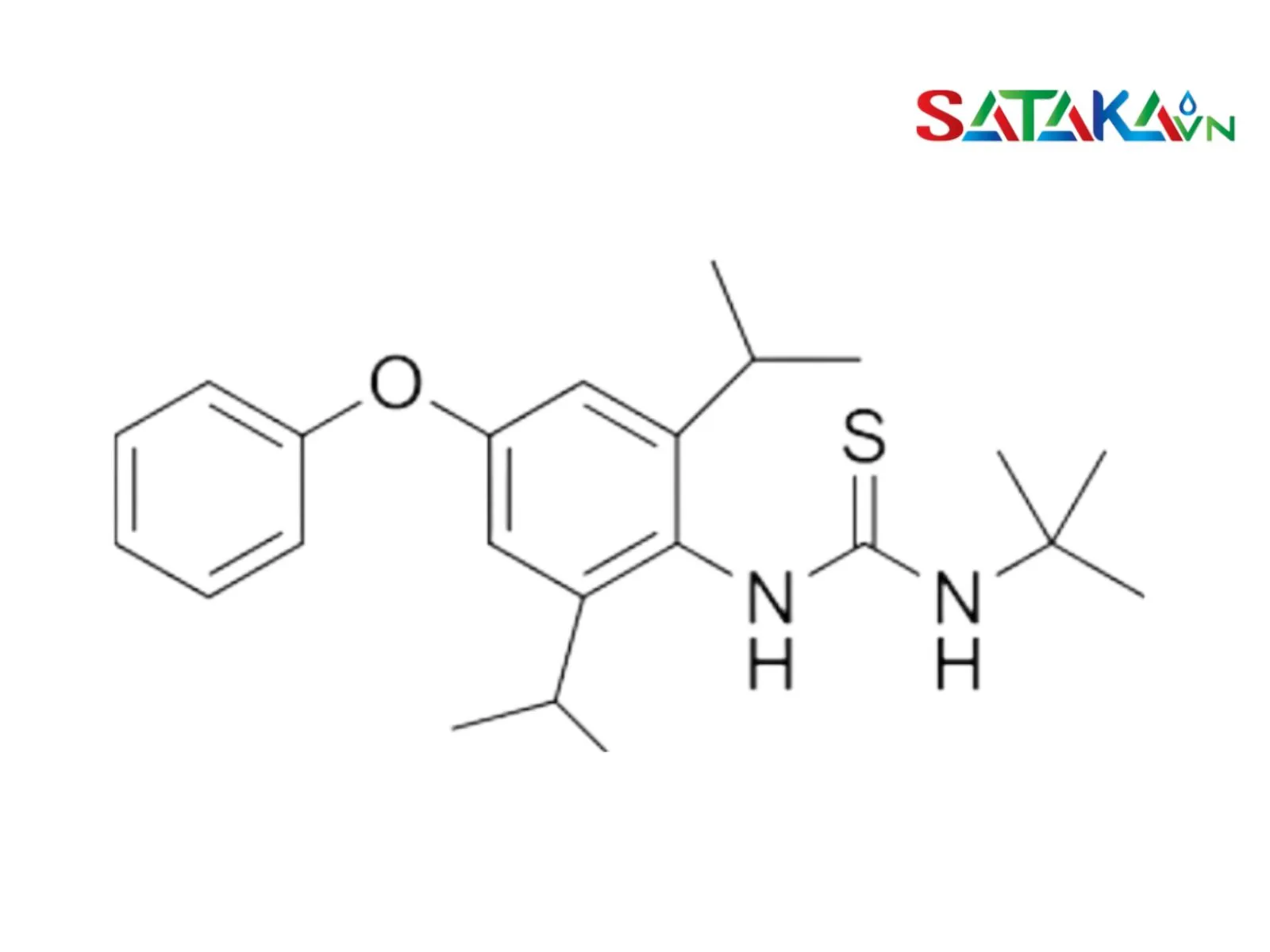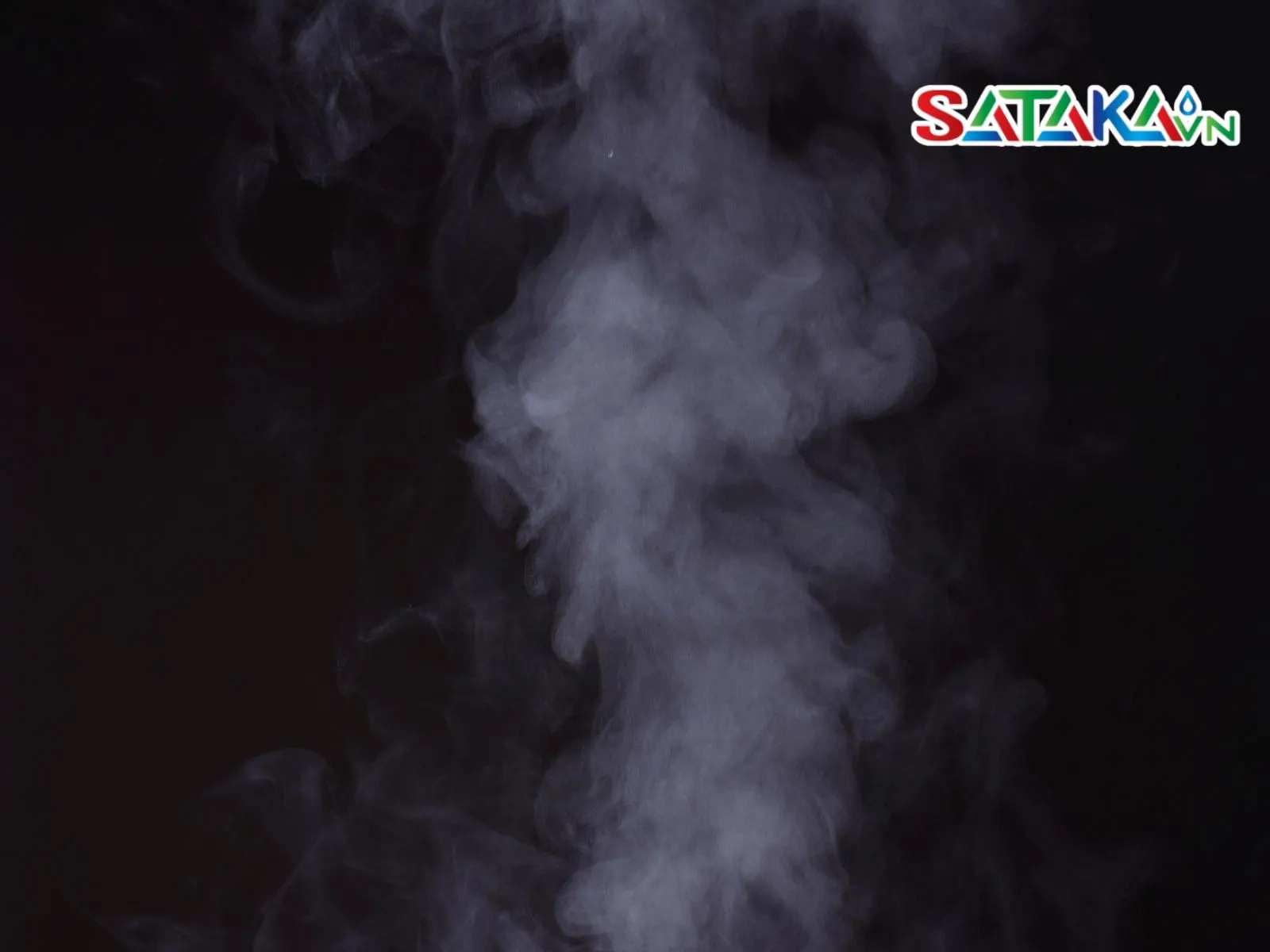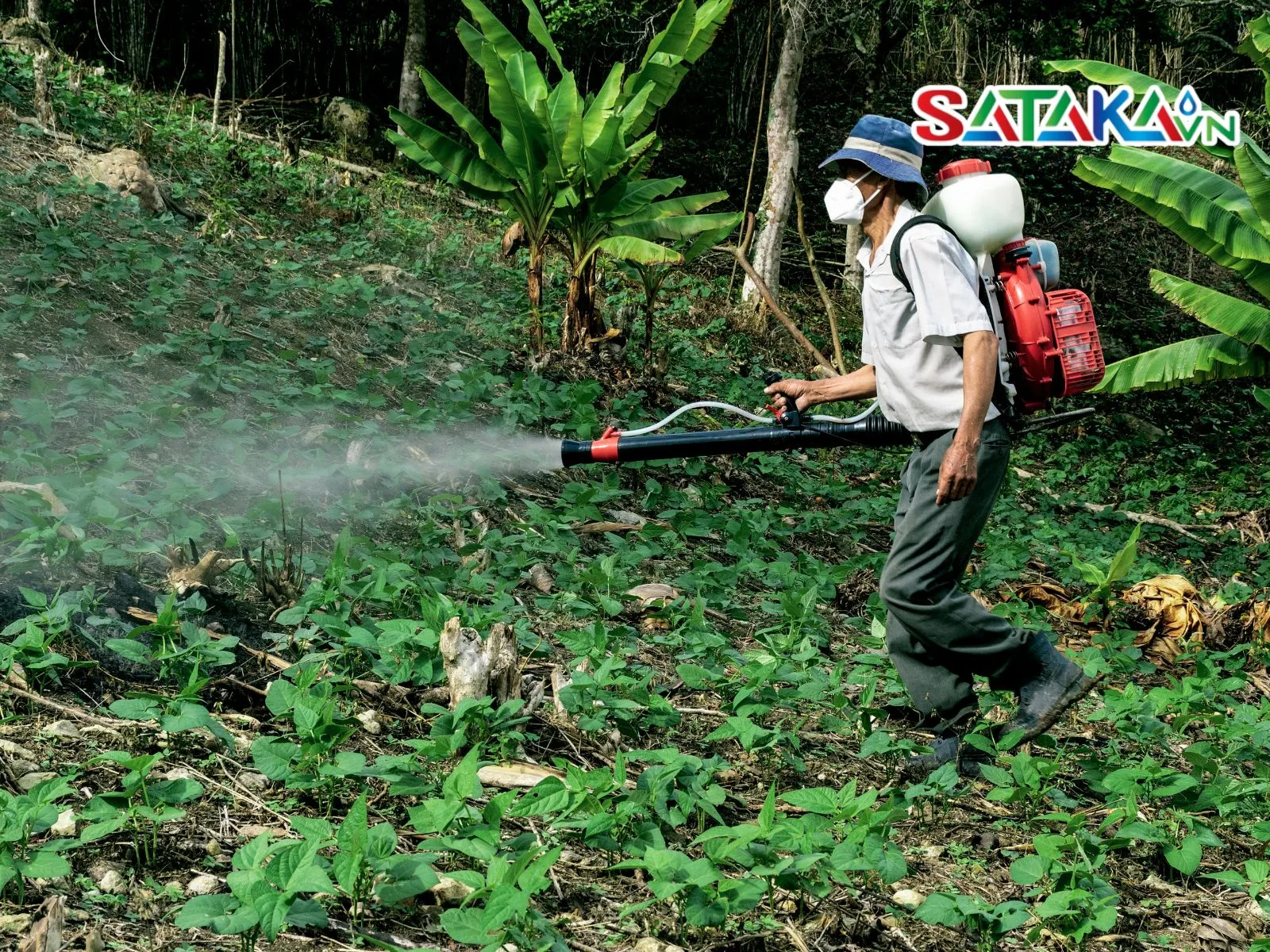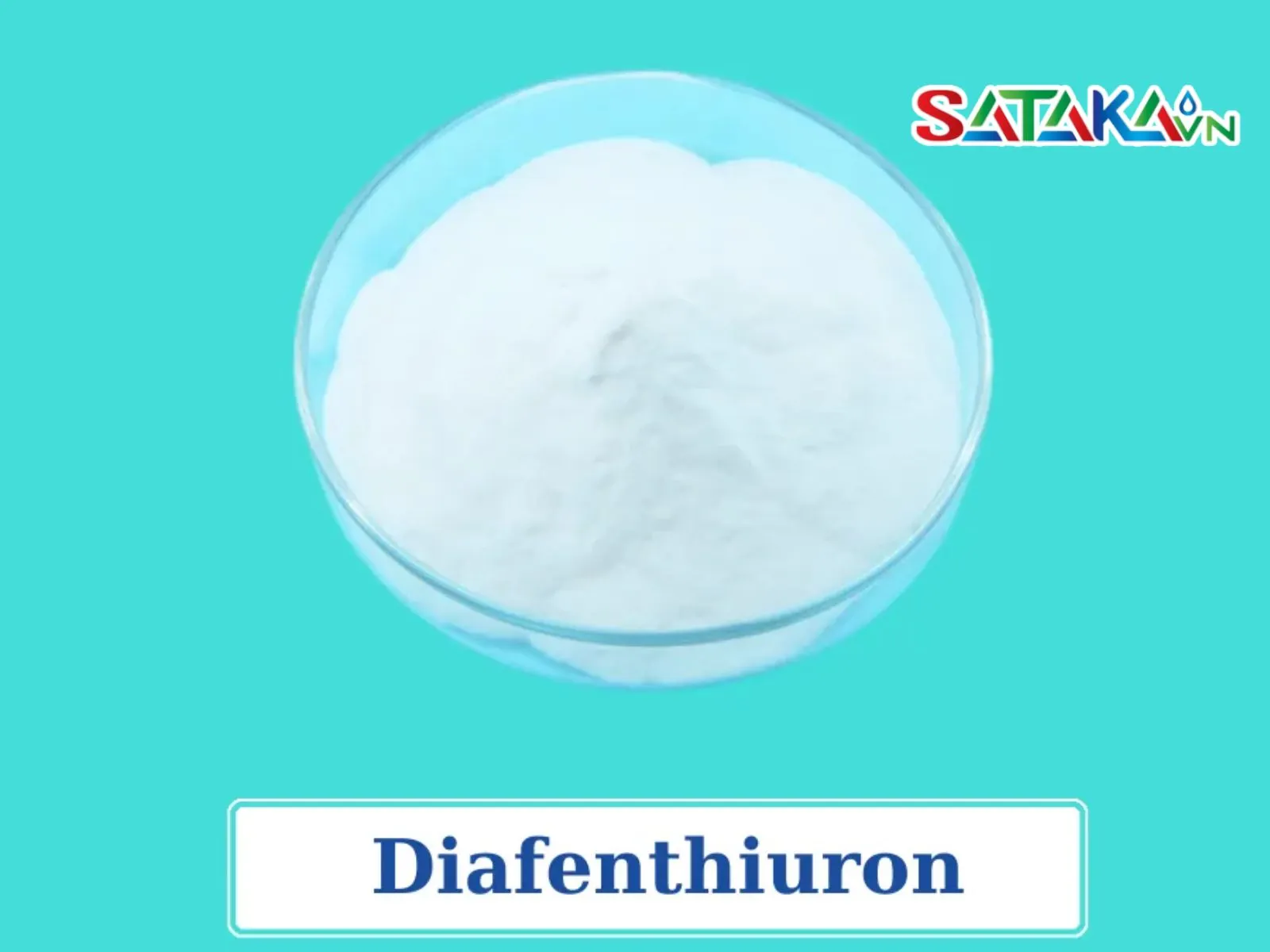Diafenthiuron effectively kills red spider mites on grapes, comprehensively protecting plants. Safe and sustainable solution, helping vineyards achieve high productivity and quality.
Diafenthiuron Kills Red Spiders on Grapes
Red spider mites are one of the major threats to vineyards, causing significant damage to yield and fruit quality. To address this issue, Diafenthiuron, a highly effective solution for controlling red spider mites on grapevines, has become a trusted choice among farmers. This article will help you better understand Diafenthiuron, its usage, and key considerations for achieving the best results in red spider mite control on grapevines.
1. Understanding Diafenthiuron
1.1 Definition and Characteristics
Diafenthiuron is an active ingredient in a new generation of insecticides and acaricides. Widely used in agriculture, especially in crop protection, Diafenthiuron has proven to be highly effective in managing pests and harmful mites. Its standout feature is its potent effect on pests, protecting crops without significant harm to the environment or humans. Particularly, Diafenthiuron effectively eliminates red spider mites on grapevines, a pest that is difficult to control and causes substantial losses for vineyard owners.

Chemical formula of the active ingredient Diafenthiuron
1.2 Mechanism of Action
Diafenthiuron works through three primary mechanisms: contact, ingestion, and fumigation. When red spider mites come into contact with Diafenthiuron, it inhibits lipid synthesis, disrupting their growth and development.
Additionally, its fumigation action allows Diafenthiuron to reach hard-to-access areas on crops, effectively killing red spider mites. Its ingestion mechanism is equally crucial, as mites that feed on treated leaves experience digestive system disruptions, leading to death.

Sauna mechanism
2. Advantages of Diafenthiuron in Controlling Red Spider Mites on Grape Vines
- Powerful efficacy: Diafenthiuron thoroughly eradicates red spider mites at all life stages—from adults to larvae and eggs—effectively stopping their development and reinfestation. This multi-dimensional approach significantly reduces mite populations, ensuring comprehensive crop protection and improving grape yield and quality.
- Broad-spectrum control: In addition to red spider mites, Diafenthiuron is effective against various other mite species, saving farmers time and costs in pest management while protecting grapevines from multiple threats.
- Long-lasting protection: With extended residual activity, Diafenthiuron protects grapevines over an extended period after application, reducing spray frequency and mitigating the risk of resistance. This is particularly important during critical growth stages, such as flowering or fruiting.
- Environmental safety: Diafenthiuron poses minimal harm to beneficial insects and the environment, helping maintain ecological balance and biodiversity. It is an ideal choice for sustainable farming and food safety, offering peace of mind to farmers and consumers alike.

Safe for the environment
3. How to Use Diafenthiuron to Control Red Spider Mites on Grape Vines
3.1 Timing of Application
Timing is crucial for maximizing the effectiveness of Diafenthiuron against red spider mites. Farmers should spray when mites first appear at low densities. Early intervention prevents the outbreak of red spider mites, avoiding severe damage to grape yield and quality. Timely spraying allows Diafenthiuron to work at its best, ensuring swift and effective control of red spider mites.
3.2 Spraying Techniques
When spraying Diafenthiuron on grapevines, ensure thorough coverage of both sides of the leaves, focusing on heavily infested areas. Red spider mites often hide on the underside of leaves, so evenly spraying both surfaces ensures complete elimination. Use a sprayer with adequate pressure to ensure the product reaches the leaves and infested areas. For large vineyards, divide the areas into manageable sections to ensure efficient application across the entire plot.
3.3 Key Considerations
- Pre-harvest interval: Adhere to the specified interval before harvest to ensure consumer safety. This information is typically provided on the product label and must be strictly followed.
- Protective gear: Always wear appropriate protective gear, such as gloves, masks, and protective clothing, during application. After spraying, clean all equipment and store the product safely, away from children and pets.

Wear protective gear when spraying
4. Important Notes on Using Diafenthiuron
- Read instructions carefully: Always follow the recommended dosage, mixing ratio, and usage instructions provided on the product label.
- Pre-harvest interval: Comply with the pre-harvest interval to ensure the safety of consumers.
- Health protection: Use protective gear, including gloves, masks, and protective clothing, during application.
- Weather considerations: Spray early in the morning or late in the afternoon, avoiding rain or strong winds.
- Avoid overuse: Do not overuse Diafenthiuron to prevent mite resistance.
- Proper storage: Store in a cool, dry place away from direct sunlight and out of reach of children and pets.
- Post-use handling: Clean equipment thoroughly and dispose of packaging according to local regulations.

Spray in the morning
5. Other Methods for Controlling Red Spider Mites on Grape Vines
5.1 Cultural Practices
- Pruning: Regular pruning improves vineyard ventilation, reducing the humid environment that red spider mites prefer. Proper ventilation decreases the risk of infestations and enhances the effectiveness of control measures.
- Balanced fertilization: Supply essential nutrients, especially potassium and trace elements, to boost the grapevine's resistance to pests. Proper fertilization also promotes healthy growth, reducing the vulnerability to red spider mites.
- Proper irrigation: Maintain stable soil moisture through appropriate watering practices. Avoid overwatering, which creates a humid environment, or underwatering, which weakens the plants and encourages mite development.
5.2 Biological Methods
- Using natural predators: Introduce natural predators of red spider mites, such as predatory beetles, ladybugs, and some predatory mite species. This safe method does not harm the environment and can be effectively combined with Diafenthiuron for integrated pest management.

Prune branches for grape vines
5.3 Physical Methods
- Sticky traps: Place yellow sticky traps around the vineyard to attract and capture red spider mites. This method naturally reduces mite populations without affecting crops.
- Protective nets: Use nets to shield the vineyard, preventing red spider mites from entering and limiting their spread among vines.
6. Sataka – Your Trusted Supplier of Diafenthiuron
Sataka is a trusted provider of high-quality Diafenthiuron for controlling red spider mites on grapevines at competitive prices. We understand the importance of protecting crops from pests, particularly red spider mites, and are committed to offering farmers the most effective solutions.
Why Choose Sataka?
- Guaranteed quality: Premium products that deliver reliable results.
- Competitive prices: Affordable solutions for all farmers.
- Dedicated service: Expert support to help you protect your crops efficiently.

Active ingredient Diafenthiuron of Sataka brand
Contact Sataka
If you are looking for quality Diafenthiuron to manage red spider mites on grapevines, contact Sataka today. We are ready to provide products and support to help you protect your vineyard effectively.






